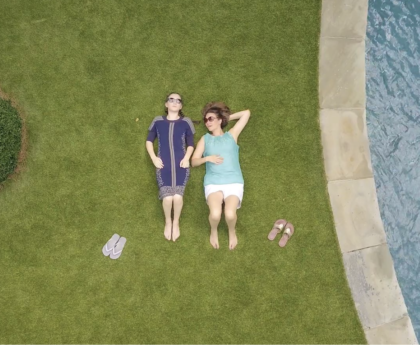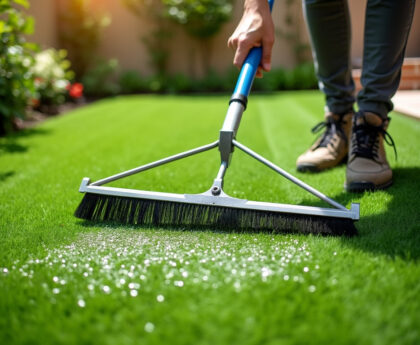Preparing the Base for Your Turf HQ Installation
Welcome back to our Turf HQ installation series! With your project meticulously planned, it’s time to lay the groundwork—literally. A well-prepared base is the unsung hero of any synthetic turf installation, providing the stability and drainage necessary for a long-lasting, beautiful lawn.
Base Preparation: Picture this: a smooth, stable surface that not only supports your synthetic turf but also enhances its longevity. Begin by removing existing vegetation using a sod cutter or shovel. Typically, you’ll want to remove 2 to 3 inches of soil, or 4 inches in colder climates to accommodate ground expansion. Use a landscape rake to set a rough grade and lightly compact the area. Treat the area with grass and weed killer to prevent future growth. This step ensures a clean slate, setting the stage for a flawless installation.
Base Materials: The secret to a successful synthetic turf installation lies in the base materials. Choose materials that allow drainage up to 8 inches of water per hour. Avoid round rocks like pea gravel or sand, as they don’t compact well and may shift underfoot. Commonly used base materials include:
- Crushed Stone: Offers excellent drainage and compaction for a solid foundation.
- Chat & Breeze Rock: Fine materials that compact well, providing stability.
- Decomposed Granite (DG): Ensures a solid, stable base for your turf.
- Crushed Limestone & Fine Gravel: Create a smooth, even surface.
- Clean Road Base/Aggregate: Ideal for larger installations, offering robust support.
Calculating Material Needs: Divide your area square footage by 324 and multiply by the depth for square yards. For tons, estimate 1 ton per 100 square feet for a 2-inch base. This calculation ensures you have enough material for a solid foundation, giving you peace of mind as you proceed with your project.
Sprinkler Considerations: Decide whether to cap or adjust sprinklers under the turf. Sprinklers can function on top of synthetic turf just like natural grass. Install the sub-base material, compact it, and ensure a smooth surface. Proper compaction prevents shifting and maintains the integrity of the installation, ensuring your new lawn stands up to the test of time.
With a well-prepared base, you’re one step closer to transforming your outdoor space. In our next post, we’ll guide you through the exciting process of installing your synthetic turf and adding those final touches that make all the difference!





